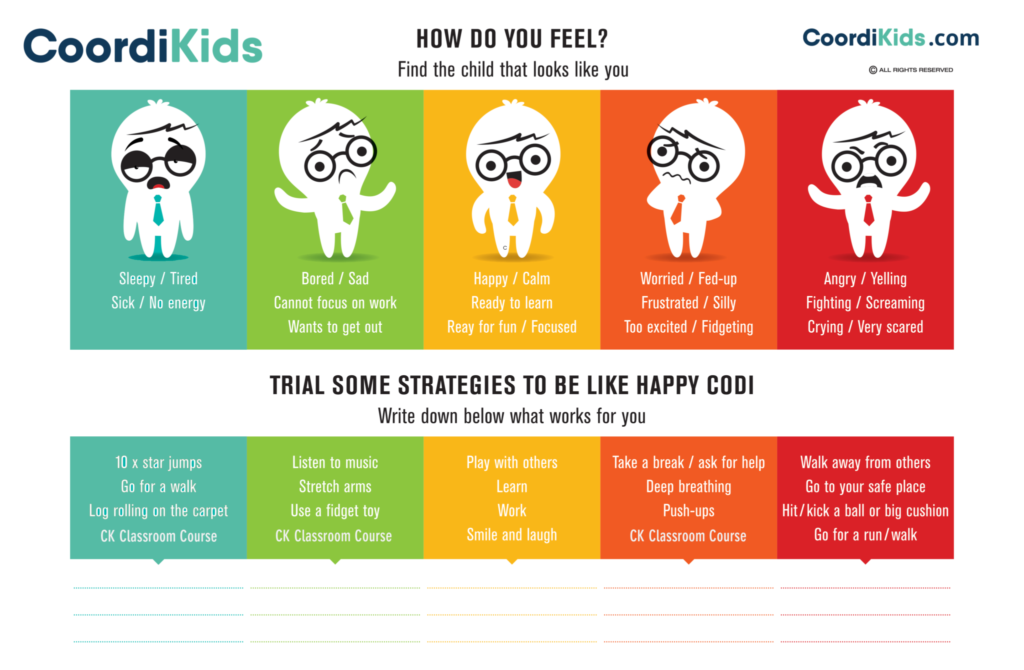Anxiety, Sensory Processing
Tips on Handling Noisy Places and Meltdowns with a Child Sensitive to Loud Noise
If you have a child sensitive to loud noise, you know just how it can interrupt the enjoyment of daily life. When you have a child sensitive to loud noises, every walk down the street could be a potential trigger for a meltdown. You learn to think 5 steps ahead in every situation.
Could there be a lawnmower around the corner?
Might a neighbour’s dog start barking loudly behind that fence?
What if the audience of the meeting erupts into applause?
What if that big truck up ahead on the highway has a backfire?
In my area of work, I see children with challenges associated with Sensory Processing Disorder (SPD). That includes the many children sensitive to noise due to SPD.
For children with this condition, the brain has trouble receiving and processing information from the senses. It leaves many children with anxiety and poor social skills for coping with school and everyday life.
Plus, it’s hard on the parents because they cannot easily understand their child and to know how to cope with their child’s challenges.
This anxiety can lead to meltdowns. And meltdowns are difficult for everyone involved. That’s why I’m taking a few minutes to offer some strategies for parents of a child sensitive to loud noises. These are strategies for coping with anxiety and handling meltdowns in noisy places.
Tips on Handling Noisy Places and Meltdowns With a Child Sensitive to Noise
1. Understand that a meltdown is not the same as a tantrum
First of all, it’s important to understand how a meltdown differs from a tantrum. When a child is angry about not getting what he or she wants, he throws a tantrum.
All children experience a tantrum at some time, resulting in anger, kicking and screaming. When a tantrum passes after a few moments, the child resumes life as usual.
A meltdown, on the other hand, is an overload of sensations. Children feel desperate and are frozen to the spot.
“Fight or fright” kicks in, and the child may not be able to cope with the situation at all. Even after the situation passes, a meltdown affects a child emotionally for the rest of the day.
You might observe signs such as:
- an increase in heart rate,
- sweaty hands,
- fear noticed in the eyes,
- even the pupils of the eyes might be larger.
2. Observe your child to fully understand his or her sound thresholds.
It’s really important to take note of exactly what will trigger a child sensitive to noise. Keep a journal, and pay attention to the types of sounds and the volume level that bothers your child.
Does it always accompany visual movement or chaos? Is it typically machinery, equipment, or vehicles? What about the emotional atmosphere? Is it only when things are perceived as frightening? Or, is it any noise over a certain volume?
Also, pay attention to your child’s behaviour changes that lead up to a meltdown.
Sometimes it can be triggered by an obvious event which everybody around can recognize. For example, if you’re walking down the street, and there is construction up ahead.
You notice your child is fixating on the direction from where the sounds come. You might see him starting to rub his ear, squint, and squirm a little. It might be obvious to you that getting any closer will lead your child into an overstimulation of his senses, which might trigger a meltdown.
We also use the “How Do You Feel“ chart to help kids to identify how they feel and to help them to feel when a meltdown is building up.
Taking a moment to communicate clearly about your child’s emotions and physical sensations can often help them take control of themselves again.

This can help parents to recognize behaviors in their child that indicate an approach to sensory overload.
3. Take care of your body.
This is a pre-emptive strategy. It takes into consideration scientific research that links certain physical factors with the ability to self-regulate. Eat healthy – this means avoiding excess sugar and caffeine.
Ensuring your child has a well-rounded diet with limited sugar and caffeine will significantly affect their ability to self-regulate. You might even consider possible negative reactions to preservatives and colorants.
Taking care of yourself as well is important to help you maintain calm for your child while in an anxious situation. This also means regulating alcohol and tobacco use.
The whole family should partake in regular daily exercise together, as well. Simply going for a fast-paced walk or kicking a ball together will help keep your body’s regulation system in equilibrium.
4. Pause and breathe slowly.
It’s obviously difficult to do when you’re in the middle of an anxious situation. However, taking a few calming breaths together with your child will help your body work toward equilibrium.
Try these when you notice the very first signs of tension or anxiety, if you leave it too late, your child will not be able to cooperate.
The trick, according to recent research, is to breathe slowly rather than focusing on deep breaths. Slow breathing instantaneously slows your heart rate, and many of your child’s physiological response to anxiety will begin to fade.
You could even set your alarm every couple of hours to interrupt your day and take a moment to breathe and release tension in your body. Setting this as a regular habit throughout your day and your child’s will do wonders for anxiety regulation.
5. Detect and redirect.
When you start to feel those first sensations of anxiety in yourself or notice them in your child, take a moment to play detective. What is going on around you that’s triggering the anxiety?
Is it something he or she can hear in the distance that is growing louder as you approach? Is there a lot of visual movement up a head or in the periphery that signifies chaos or a noisy crowd?
If you can identify the trigger of the anxiety, you have a few options of how to navigate your next step. Can you simply avoid the situation altogether by walking a different direction or changing paths?
Could you consider running ahead to ask someone to turn off a loud piece of equipment until your family passes? If not, can you stop for a moment to warn your child calmly about the approaching situation? Perhaps by preparing your son or daughter, an issue can be avoided.
Perhaps a mindful warning is all he or she will need to relax and set about getting through the situation without a total meltdown. One of my clients, for example, has a son that will have a very long meltdown that will affect the rest of his day if he is surprised by a loud noise.
However, if his mum outlines a situation step-by-step with what to expect, he focuses on the steps one at a time and does not over-react.

A Step-by-Step Example
Here is how she does it. At parties, instead of being surprised by applause that sends him running and screaming into the parking lot, his mum tells him, “We are at a birthday party for Jonah.
Jonah’s parents will bring a cake that has candles on it. Then we will all sing Happy Birthday to Jonah. At the end, he will blow out the candles and everyone will clap and cheer for Jonah.
We are all very happy and having fun to celebrate with Jonah on his happy, special day! So the clapping will be happy. Watch to see all of the smiles on people’s faces! Here we go!”
Her son now repeats the steps back to her. Then as they unfold, his mum asks, “Ok what’s going to happen next?” and he tells her. When the applause approaches, she prompts him,
“Ok, now we all clap! Are we happy or scared when we clap? That’s right, we’re happy! YAY! Let’s clap for Jonah!” Fortunately, this strategy has made significant difference in their daily life, so hopefully it will help some of you too.
If your child has a severe problem, you might invest in a set of noise cancelling head phones to wear on certain occasions (not all the time!).
For example, you can offer them just before the applause and singing at the party mentioned above. It is not uncommon these days to spot a child sensitive to noise by the head phones they are wearing.
6. Try visualization exercises: Put a Lid on it.
This is a visualization exercise that comes from Ron Huxley’s “9 Anxiety Tools”. In this toolbox, you identify your anxiety triggers, your negative thoughts, and then visualize putting those thoughts into a jar. Put a lid on the jar and set it on a shelf. Then walk away.
7. Try a sensory diet.
A sensory diet can do wonders for preventing meltdowns. A sensory diet is simply a plan that parents use to ensure that their child receives the sensory input he seeks at regular intervals throughout the day.
For a child sensitive to noise, their sensory diet would include periods of time where she can escape to an environment with very low stimulation.
4-6 times per day, she goes to a quiet, low-lit room where you give a deep-pressure massage with soft music and slow, rhythmic movements for 5 minutes.
This helps her physically and mentally decompress in order to be more ready to cope with the next overwhelming sensory situation. A set of targeted, regulating exercises are included in all of our in-home therapy programs at CoordiKids Home Course. These exercises can be repeated at regular intervals during the day to assist with self-regulation.
8. Identify what works best for relieving your child from a meltdown.
If your child has a meltdown, it’s important to know what soothing strategy works best for him or her to unwind. (Be sure to write them down and give copies to his teachers and other care providers.)

Here are some common soothing strategies for you to try with a child sensitive to noise :
- Remove your child to a quiet, safe area. This is not a “time out” in the disciplinary sense, and you should not leave a child alone who is having a meltdown. This is simply to remove him or her from the noisy situation to help feel safe and secure until the body and sensory integration can rebalance.
- Hold your child tightly against you and rock slowly.
- Breath slowly while looking into your child’s eyes so she can synchronize her breaths with yours.
- Use some of the stretching and breathing exercises in each set of our Home Course digital program to help your child to revert back to a calm, focused state. He or she will then be ready to meet the challenges of the day!
Marga Grey (MSc OT) has served as a pediatric occupational therapist for over 40 years with a specialization in sensory integration.
She has worked in both private and public settings, including service as a Clinical Educator at Queensland University. Marga developed the occupational therapy department for Tyack Health (the largest multi-disciplinary practice in Australia), where she currently serves as the Leader of the pediatric team.
The department, which focuses on pediatric patients, addresses sensory processing and motor skill development. Marga regularly provides seminars, workshops and training for parents, therapists and teachers, in person and online through her company CoordiKids.
Marga is also author of two books, entitled “Sensible Stimulation: The Key to Your Child’s Development During the First Three Years of Life” and “The Sensory Motor Skills: Functional Implications: Stories about fantastic children with sensory motor processing issues.”